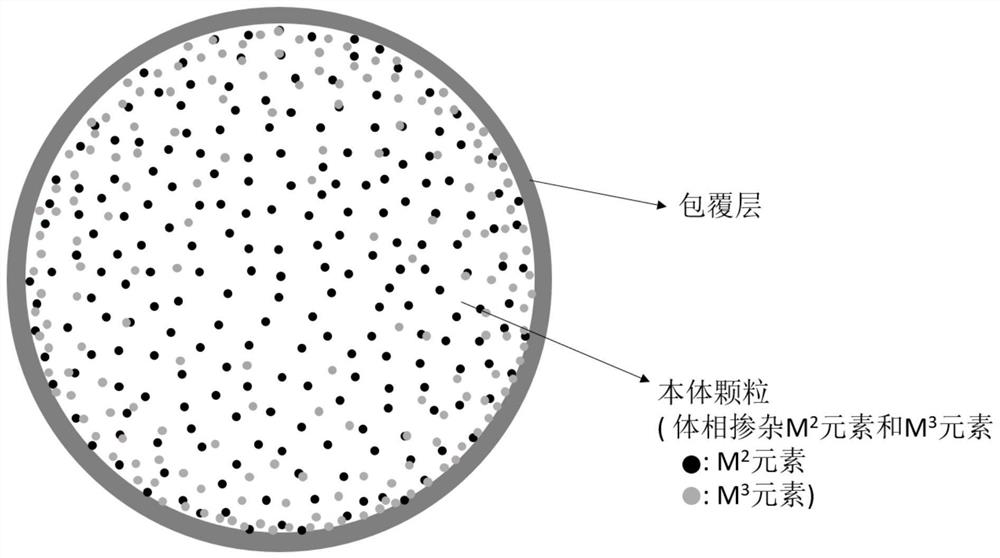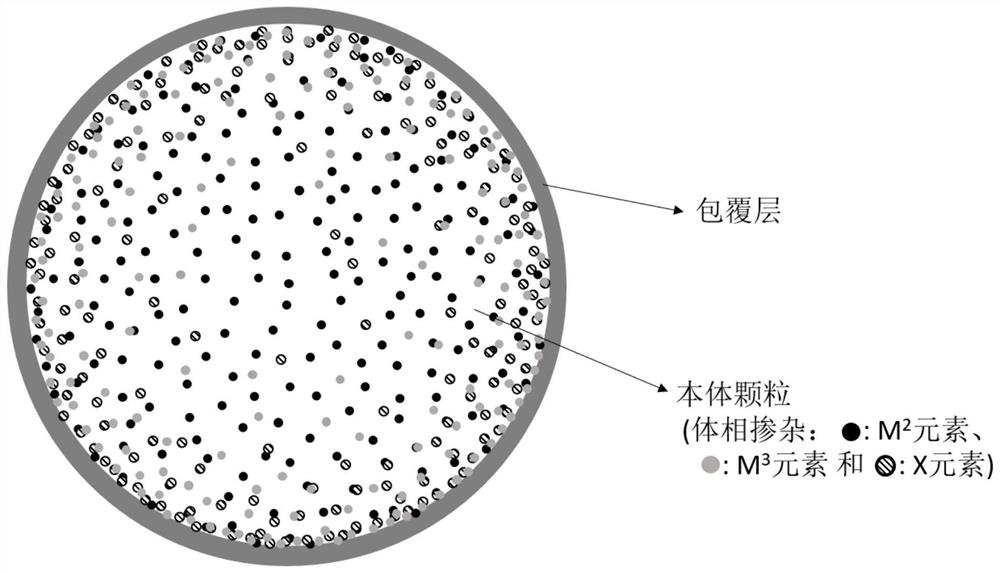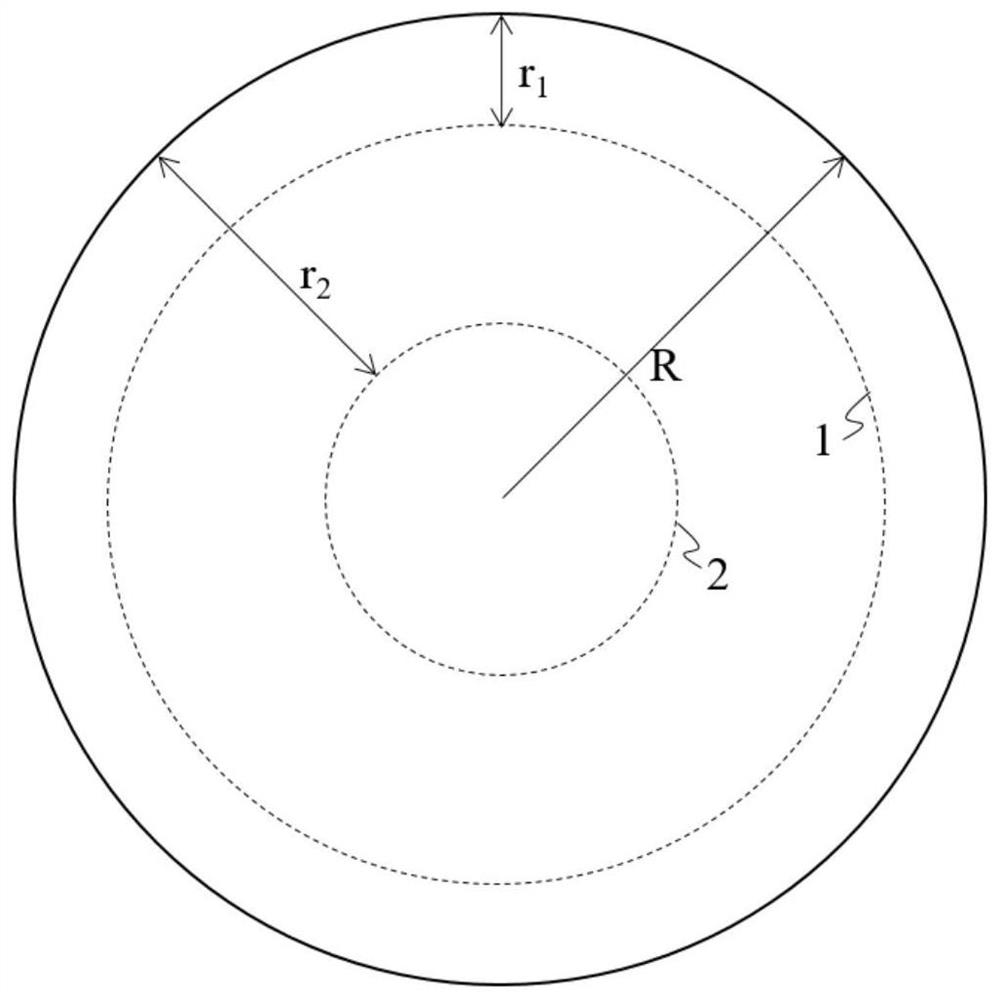Positive electrode active material, preparation method thereof, positive electrode plate and lithium ion secondary battery
A positive active material, lithium-nickel-cobalt-manganese technology, applied in secondary batteries, active material electrodes, positive electrodes, etc., can solve the problems of high-temperature cycle performance and poor anti-gas production performance, and achieve improved anti-gas production performance, high Specific capacity characteristics and the effect of reducing battery gas production
- Summary
- Abstract
- Description
- Claims
- Application Information
AI Technical Summary
Problems solved by technology
Method used
Image
Examples
Embodiment 1
[0131] Preparation of cathode active material
[0132] (1) The nickel-cobalt-manganese ternary material precursor [Ni 0.8 co 0.1 mn 0.1 ](OH) 2, lithium hydroxide LiOH and antimony trioxide Sb 2 o 3 Add in a high-speed mixer and mix for 1h to obtain a mixture, wherein the molar ratio Li / Me of the nickel-cobalt-manganese ternary material precursor to lithium hydroxide is 1.05, and Me represents Ni in the nickel-cobalt-manganese ternary material precursor. , the total molar weight of Co, Mn; Sb 2 o 3 The addition amount makes the content of Sb in the positive electrode active material be 3014ppm. Put the mixture into an atmosphere sintering furnace for sintering, the sintering temperature is 830°C, and the sintering atmosphere is O 2 In an oxygen-containing atmosphere with a concentration of 90%, the sintering time is 15 hours, and the matrix particles can be obtained by crushing and sieving, wherein Sb is uniformly doped in the bulk phase structure of the matrix parti...
Embodiment 2~35 and comparative example 1~9
[0145] The difference from Example 1 is that the relevant parameters in the preparation steps of the positive electrode active material are changed to obtain the positive electrode active material with predetermined parameter characteristics, see Table 1-1 to Table 1-2 for details.
[0146] Wherein, the positive electrode active material precursors of Examples 2-31 and Comparative Examples 1-5 are [Ni 0.8 co 0.1 mn 0.1 ](OH) 2 ; The positive electrode active material precursors of Examples 32~35 and Comparative Examples 6~9 are [Ni 0.5 co 0.2 mn 0.3 (OH) 2 . And in Table 1-1 and Table 1-2:
[0147] The M of embodiment 2, embodiment 10 and embodiment 33 2 The element precursor is TiO 2 The M of embodiment 3 and embodiment 11~14 2 The element precursor is NbO 2 ; The M of embodiment 4 2 The element precursor is ZrO 2 ; The M of embodiment 5 2 The element precursor is RuO 2 ; The M of embodiment 6 2 The element precursor is GeO 2 The M of embodiment 7 and embodim...
PUM
| Property | Measurement | Unit |
|---|---|---|
| particle size | aaaaa | aaaaa |
| thickness | aaaaa | aaaaa |
| thickness | aaaaa | aaaaa |
Abstract
Description
Claims
Application Information
 Login to View More
Login to View More - R&D Engineer
- R&D Manager
- IP Professional
- Industry Leading Data Capabilities
- Powerful AI technology
- Patent DNA Extraction
Browse by: Latest US Patents, China's latest patents, Technical Efficacy Thesaurus, Application Domain, Technology Topic, Popular Technical Reports.
© 2024 PatSnap. All rights reserved.Legal|Privacy policy|Modern Slavery Act Transparency Statement|Sitemap|About US| Contact US: help@patsnap.com










